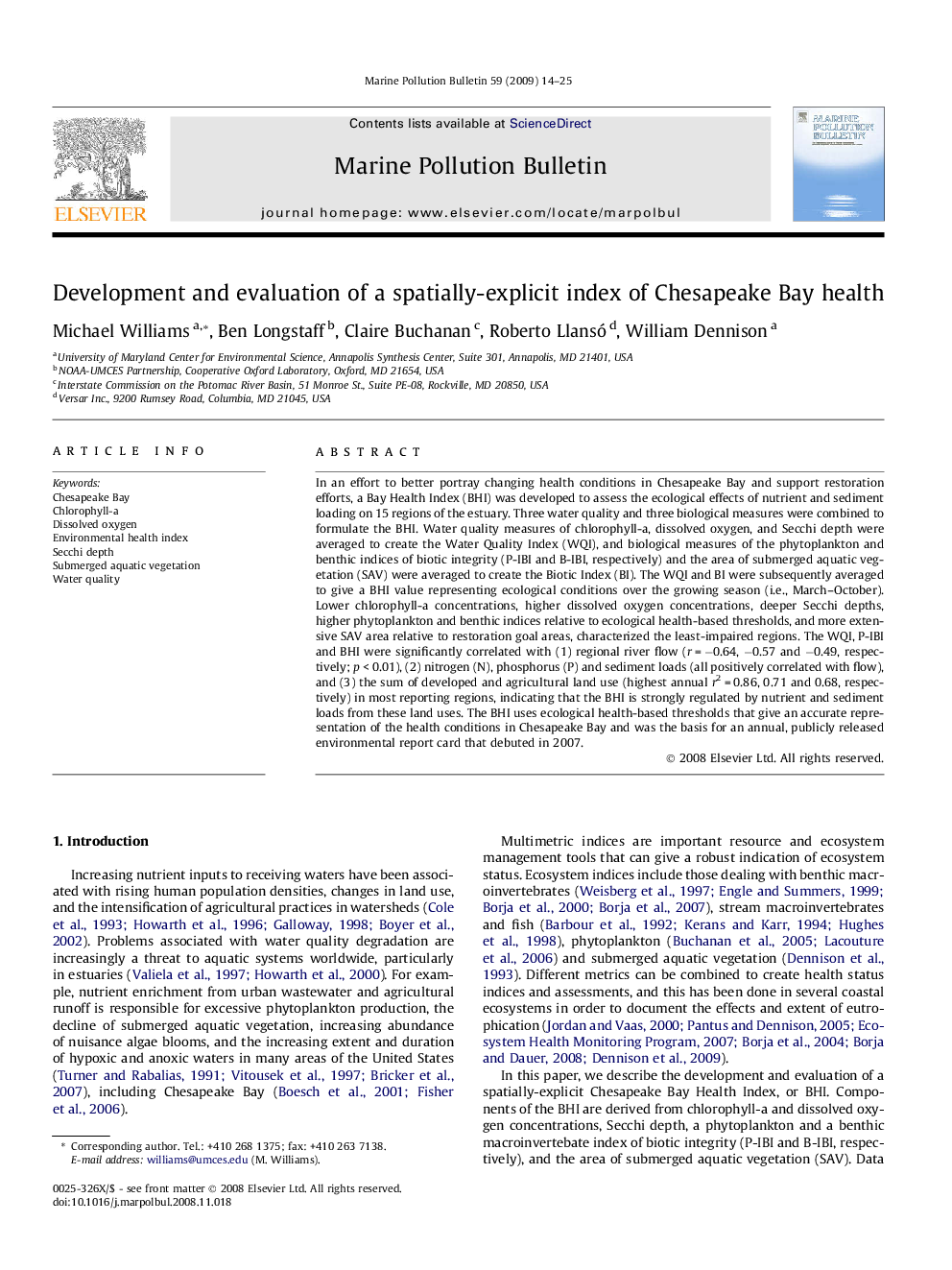| Article ID | Journal | Published Year | Pages | File Type |
|---|---|---|---|---|
| 4476861 | Marine Pollution Bulletin | 2009 | 12 Pages |
In an effort to better portray changing health conditions in Chesapeake Bay and support restoration efforts, a Bay Health Index (BHI) was developed to assess the ecological effects of nutrient and sediment loading on 15 regions of the estuary. Three water quality and three biological measures were combined to formulate the BHI. Water quality measures of chlorophyll-a, dissolved oxygen, and Secchi depth were averaged to create the Water Quality Index (WQI), and biological measures of the phytoplankton and benthic indices of biotic integrity (P-IBI and B-IBI, respectively) and the area of submerged aquatic vegetation (SAV) were averaged to create the Biotic Index (BI). The WQI and BI were subsequently averaged to give a BHI value representing ecological conditions over the growing season (i.e., March–October). Lower chlorophyll-a concentrations, higher dissolved oxygen concentrations, deeper Secchi depths, higher phytoplankton and benthic indices relative to ecological health-based thresholds, and more extensive SAV area relative to restoration goal areas, characterized the least-impaired regions. The WQI, P-IBI and BHI were significantly correlated with (1) regional river flow (r = −0.64, −0.57 and −0.49, respectively; p < 0.01), (2) nitrogen (N), phosphorus (P) and sediment loads (all positively correlated with flow), and (3) the sum of developed and agricultural land use (highest annual r2 = 0.86, 0.71 and 0.68, respectively) in most reporting regions, indicating that the BHI is strongly regulated by nutrient and sediment loads from these land uses. The BHI uses ecological health-based thresholds that give an accurate representation of the health conditions in Chesapeake Bay and was the basis for an annual, publicly released environmental report card that debuted in 2007.
